Time for Day 3 of our continuing adventures in Italy. For this trip, we wanted to explore a bit farther afield, and I suggested Milan (both to my wife, Jaci, and host, Franco) – as there were musical instrument research possibilities there, along with other museum options for Jaci, and friends to help show us around.
As it turned out, we discovered 2 different costume exhibits (plus art and Egyptology) to engage Jaci and 4 stringed instrument collections to make it a very worthwhile harp guitar-related trip. As for friends, Franco’s granddaughter Giulia and her boyfriend Hiroki are living in Milan and offered to be our guides, and I also took Giorgio Ferraris – whom I had met at the end of our trip 2 years ago – up on his offer to visit any time we came to Milan. Again, our indispensable host Franco methodically orchestrated all the details for us.
We ended up taking a ton of nice (and hopefully not too boring) pictures, so I’ll break this down into shorter, more frequent, chapters.
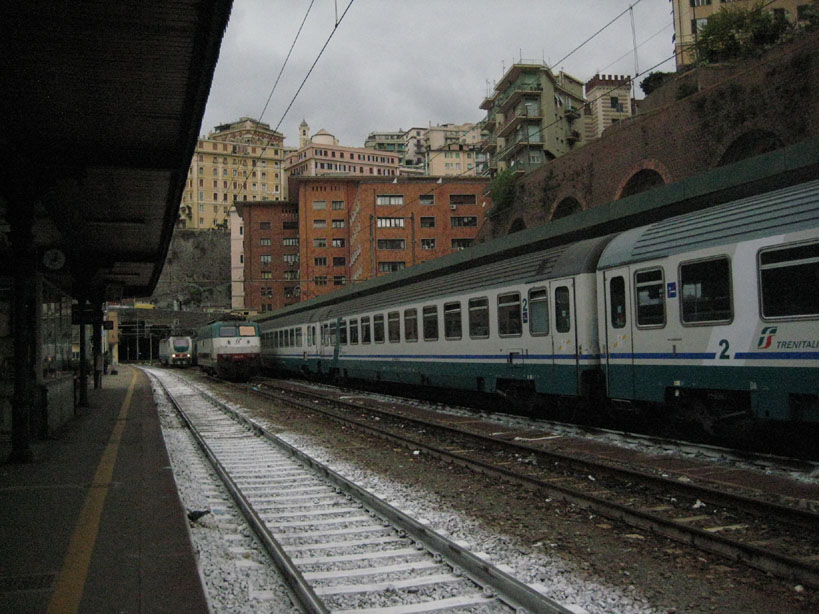
And so, off for a train ride of a bit under 2 hours. I had hoped for some good photo opportunities en route, but A) scenery was a bit flat for our liking, B) the windows were too rain-streaked and filthy to shoot through anyway, and C) I immediately became drowsy and fell asleep, so the point was moot. Dang jet lag.
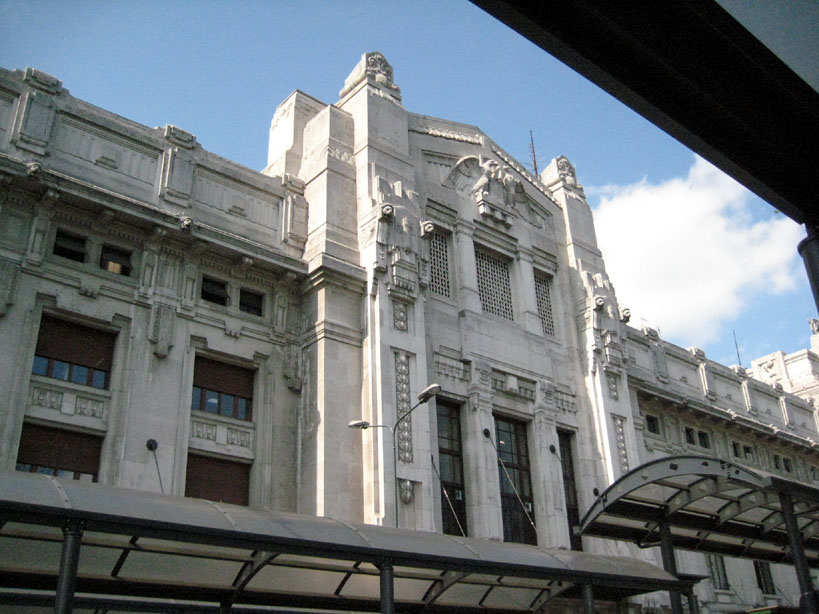
The Milan train station was an impressive 100-year old structure.
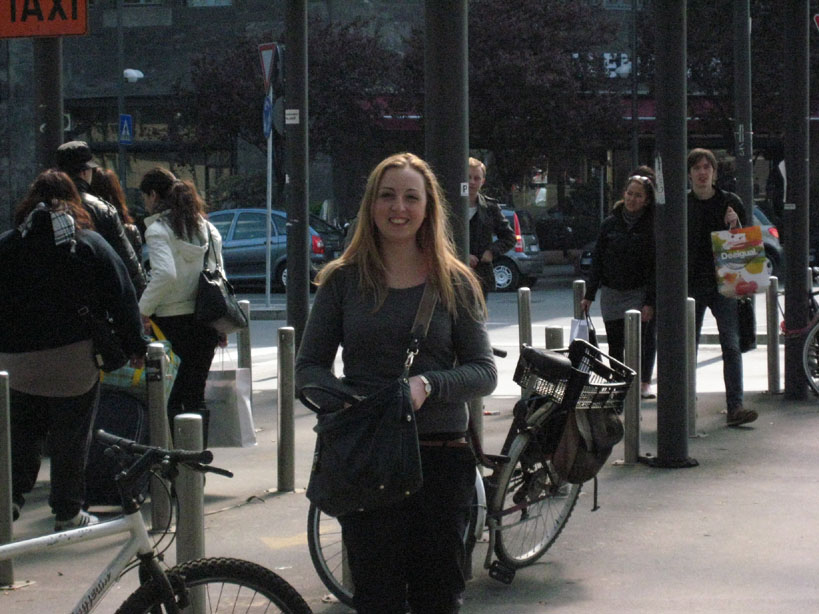
We were met by Giulia…
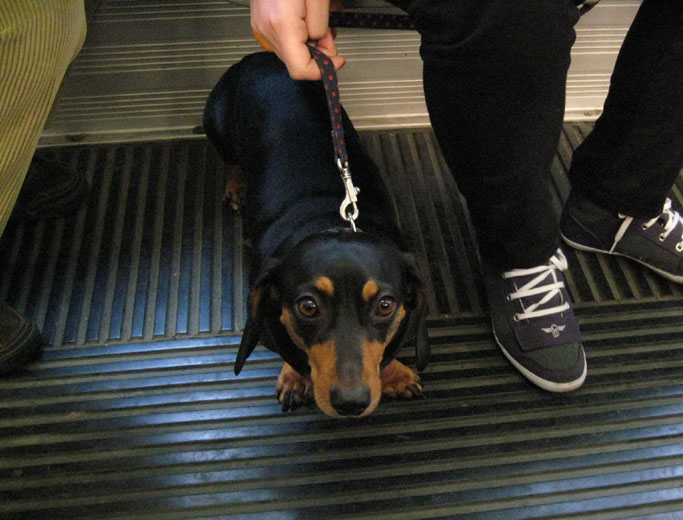
…with her assistant, Bebe. Then off by taxi for a quick stop at our hotel, then a short jog to catch (just!) the cable car to the city center before things closed up.
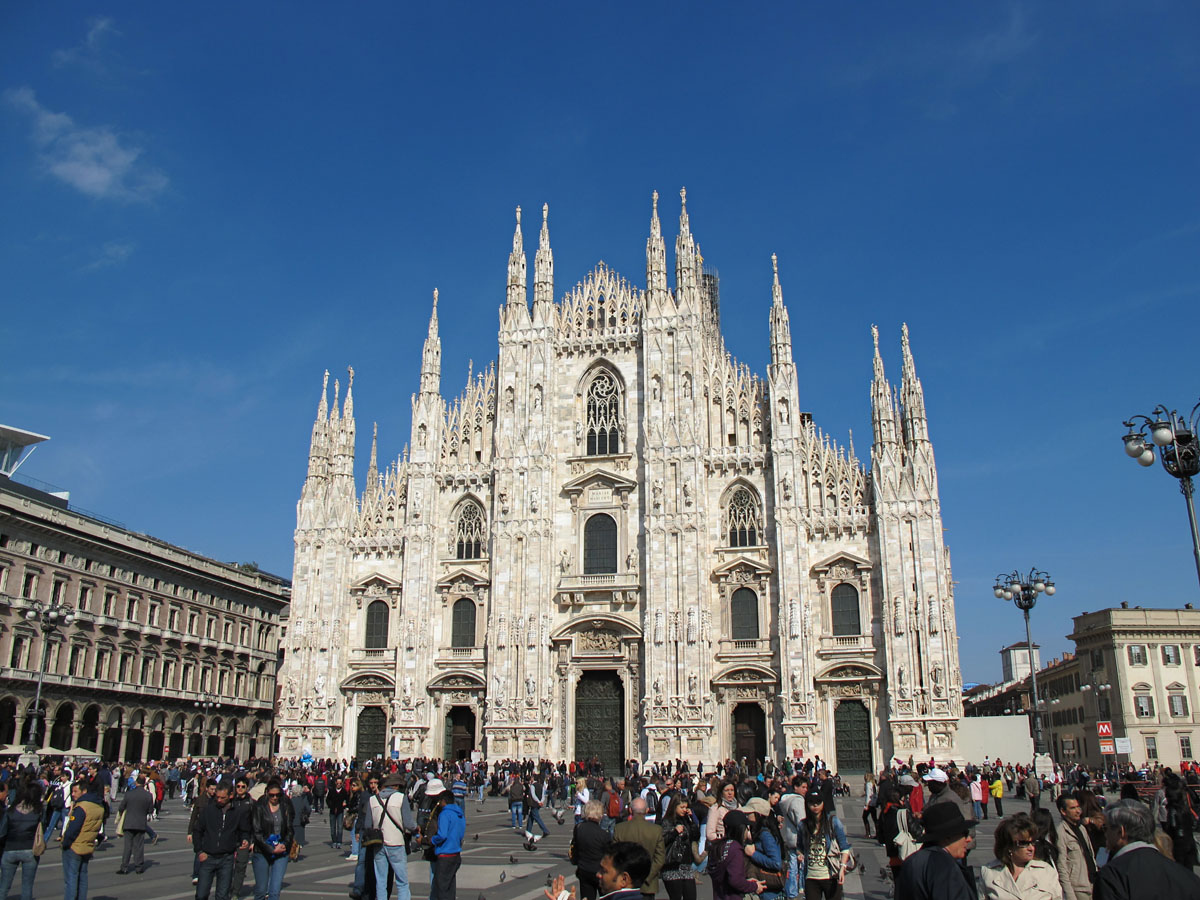
Dominating the square is the Duomo cathedral, the third-largest church in the world. Not too shabby. Construction began in 1386, with the façade finally finished by Napoleon in the 19th century. We went inside the next day, so stay tuned.
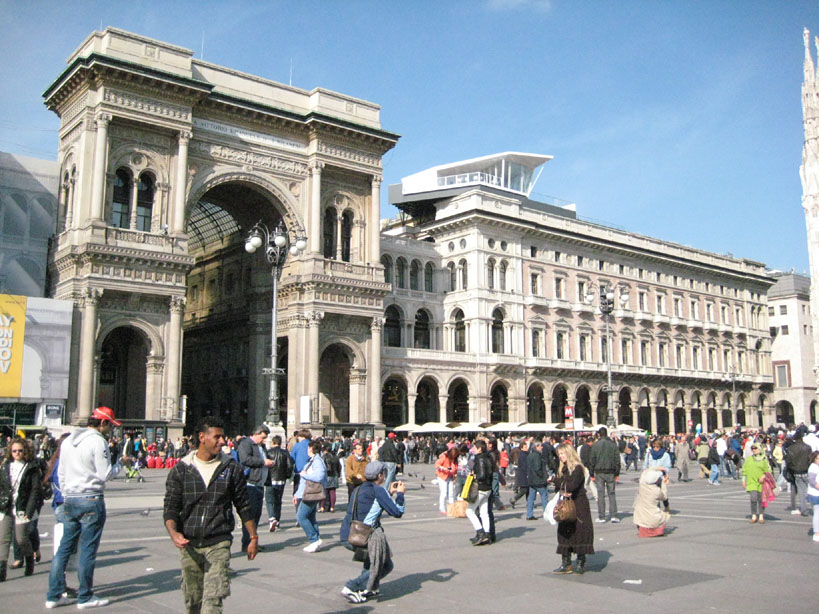
To the left of the cathedral is the imposing archway of the Galleria Vittorio Emanuele II shopping center. Overkill, again, but similarly impressive.
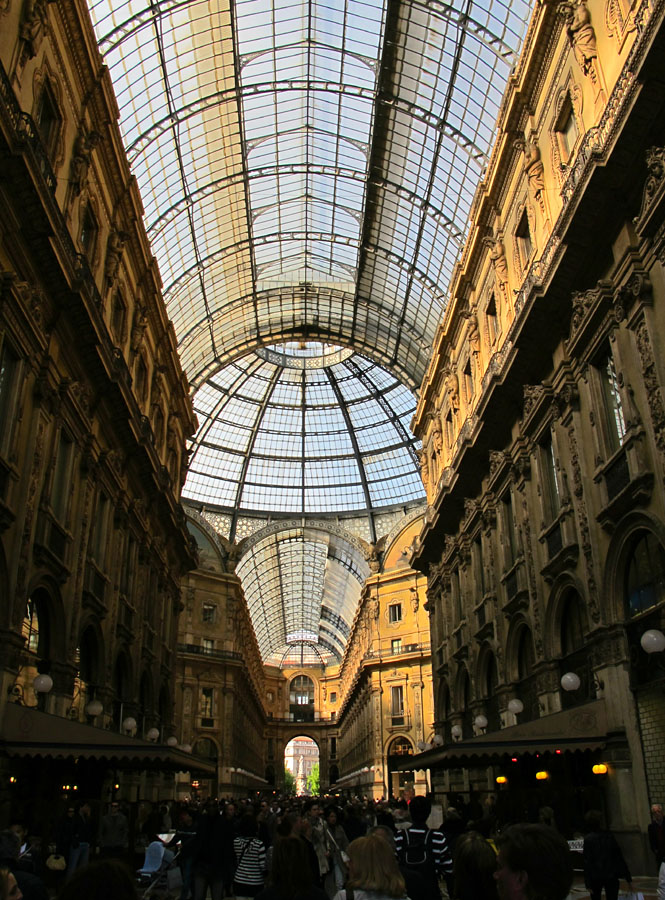
Under the open-ended indoor/outdoor “mall.”
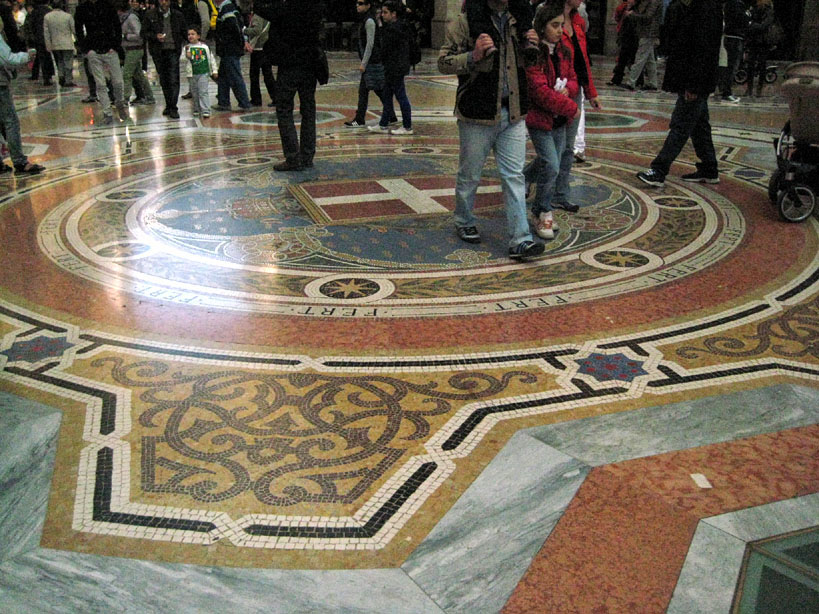
It had incredible marble tile walkways
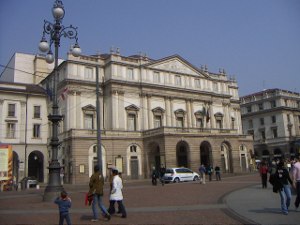
Turned out we had just enough time to go through Museo Teatrale alla Scala (The Theatrical Museum at the La Scala Opera House), which we were told had many rooms of art, opera memorabilia and costumes, with musical instruments sprinkled throughout.
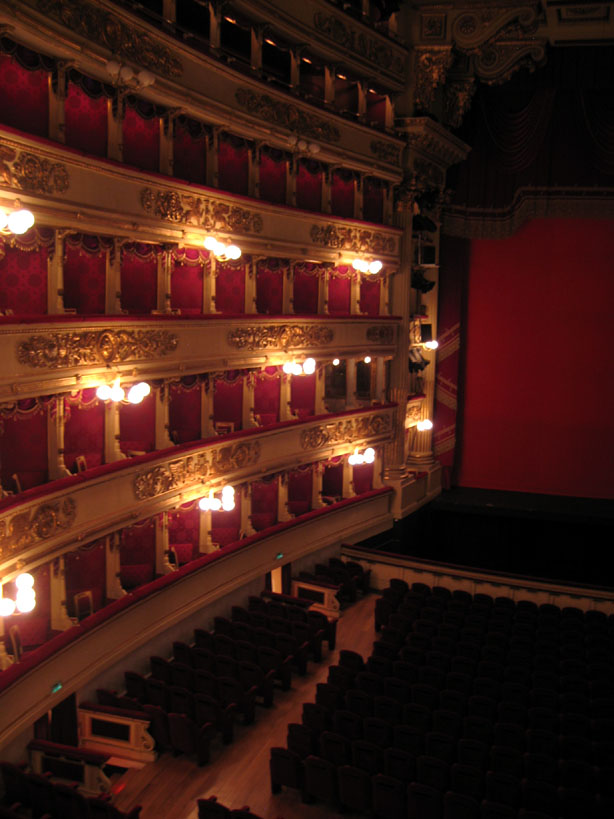
Despite the inevitable Non Fotografia signs at the entrance and the many lurking guards (the city’s Classifieds read: “Wanted: Non-English-speaking guards. Must be able to lurk.”), we managed to sneak a couple of pics, including the amazing, restored theater with its endless stories of boxes in a grand semi-circle.
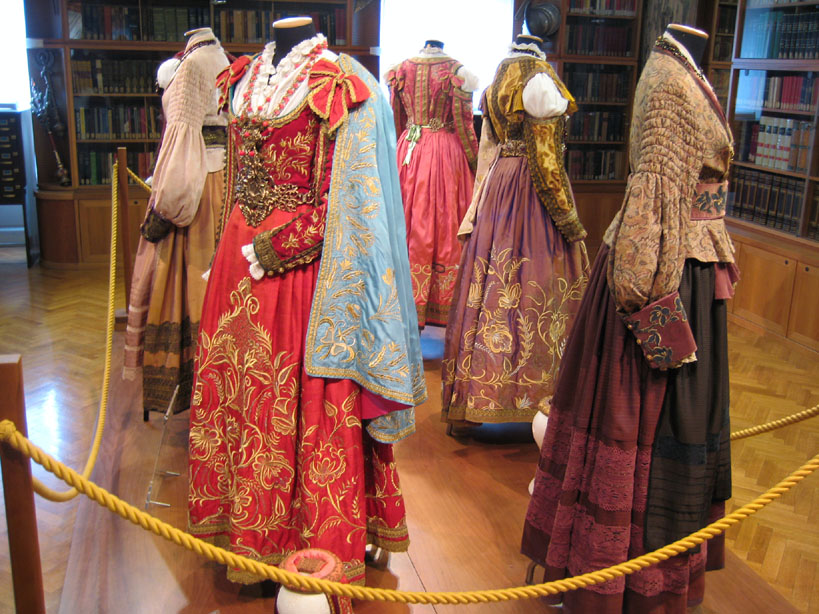
Jaci managed to sneak some nice reference photos of the costumes (hey, she would’ve bought the book, but there wasn’t one).

I wasn’t as fortunate with the instruments, but upon immediately spotting the first display case (on the back wall in this photo from the souvenir book I bought), it hit me that I had seen these before…in fact, they were already on the web site! Turns out the entire La Scala instrument collection is pictured in the elaborate and expensive (and long out-of-print) book La collezione di strumenti musicali del Museo Teatrale alla Scala, which I had picked up at Tony Bingham’s in London many years ago. I hadn’t researched or connected the two as this was an impromptu side trip. In any event, I was glad I already had photos of everything I needed and similarly glad to see all these interesting instruments “in the wood”…
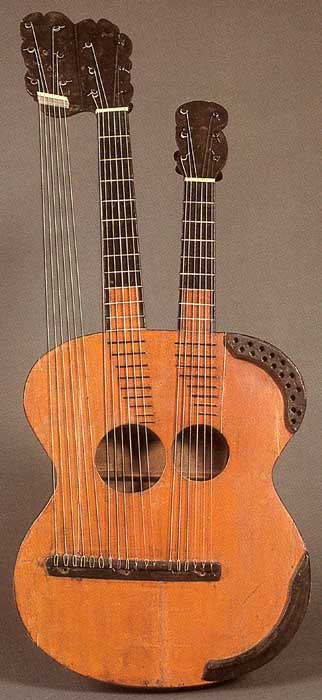
…although I was a little taken aback by the condition, quality, and construction of some of them. The super-John Doan-style double-neck, with its 6 sub-basses, two necks (standard and terz), and 17 super-trebles was an amazing variant for c.1860, but not of real professional quality. I was able to hover right over it in its glass case.

In the same display case, this unusual instrument was identified as a c.1900 chitarrone popolare – meaning a much later “folk theorbo” – and was somewhat sloppily made, with overly gaudy inlays and such.
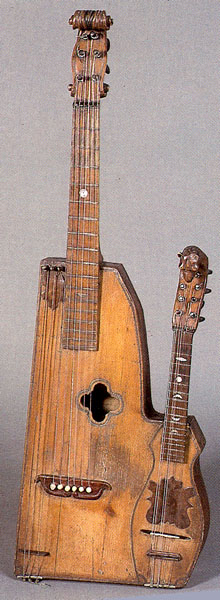
Another one-off instrument, again more rustic than the photo leads one to believe – despite the fancy carved heads – was the interesting 1894 Verona “guitar-mandolin,” which I’ve had in the Composite Form Harp Guitars gallery due to its added non-fretted strings, which are really 3 zither-like strings (as in “sub-basses tuned high” would be my guess).
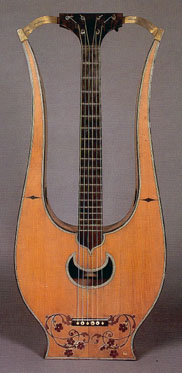
I was unable to determine if any of these instruments might have been created as “functional props” for various operas. Clearly, the nice Fabricatore lyre guitar (Naples, 1821) above and Preston harp-lute (London, early 1800’s) below were authentic quality instruments, as are the many rare violins, keyboards and winds in the collection – unrelated to the history of the opera house.
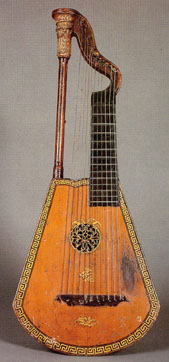
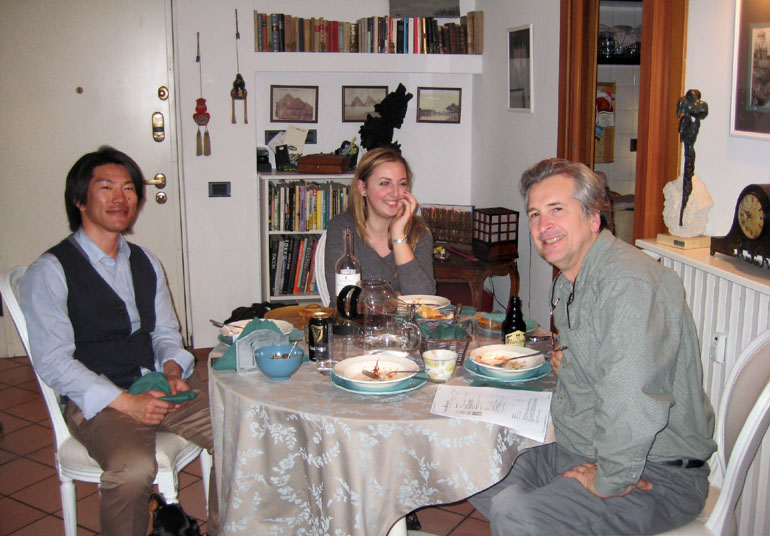
We ended the day with a relaxing dinner at Giulia’s home, with Hiroki arriving in time to join us from his long day as design production manager for a Japanese leather goods company.
With a full itinerary planned for the following day, we presently went home to bed with cautious hopes of more agreeable weather.
Next: Milan, Day 2 Morning: Outside & Inside Duomo!
You can also go back and begin at the start of our 2012 Italian adventure here: Another Genoese Feast, with a Side Dish of Milan

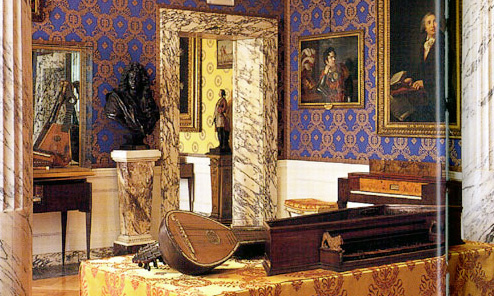
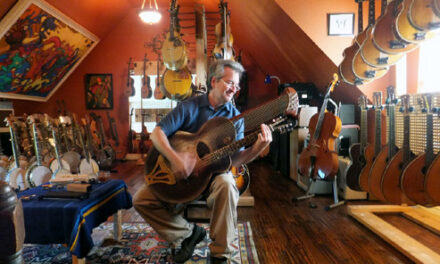
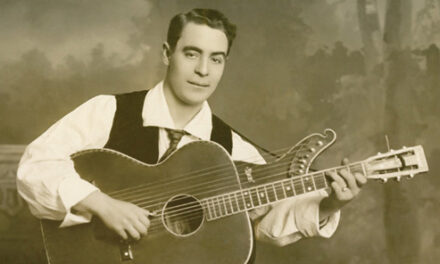
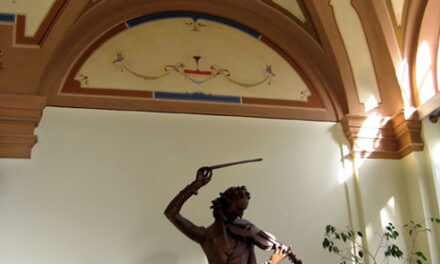
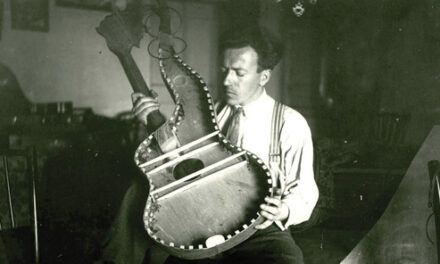
We already miss you so much! Thanks for the beautiful Milano – review and pictures and the nice time we spent together. Next time we’ll show you other beautiful italian cities like Venezia and Roma! un abbraccio da tutti noi
Mine too–internet translators rock. I think I did learn how to say, “May I please shave your legs”, in Italian once, but that was years ago for, uh, artistic reasons….
Paul, stop showing off, or next time Jaci WILL take you instead of me (I miei succhia italiani)…
Suona come un tempo meraviglioso! L’Italia è uno dei miei posti preferiti. La prossima volta, si prega di portami con te.